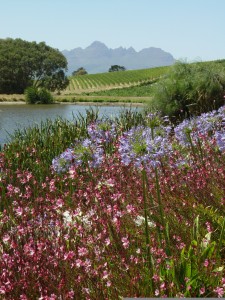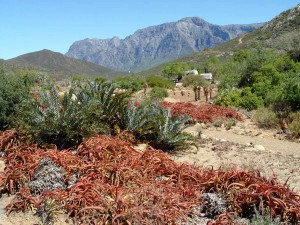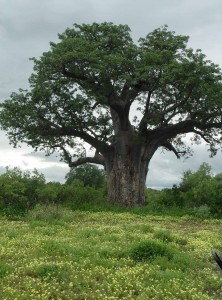Definitely Not Mechanicsburg
January 25th, 2011
Well it’s not every day in Mechanicsburg you get woken at 4:30 a.m. by the deep, warbling “yahoo” hollers of a baboon.
That kind of surprise has been the norm, though, for the two weeks I’ve been here in South Africa on a “garden safari” through Harrisburg Area Community College.
Bill Stoffel of Palmyra, who’s traveling in our group, said it best: “Everything is different here – the plants, the animals, the culture, the climate, the stars, even the shells and rocks.”
It’s certainly the most unusual place I’ve ever been. And every new part of South Africa we visit, it’s vastly different from the last.
The South Africa tourism industry likes to claim a visit here is like visiting a dozen different countries. That’s no hype.
The western cape is hot and dry in summer (which is now for South Africa), and its native plant life runs largely to bushy, scrubby but highly colorful plants.
Drive down the peninsula and you think you’re in Maine with its rocky coastlines and bands of sandy beaches.

One of the many nice scenes from South Africa wine country -- this one at the Jordan Winery near Stellenbosch.
Drive inland an hour and you’re in California wine country with vineyards growing in strips as far as you can see. Grapes do very well in this part of South Africa because of the plentiful sun, warm days and dry air that keeps rot diseases to a minimum. Curiously, a rose bush is planted at the end of every grape row – a throwback to the days when the thorny bushes kept plow horses from short-cutting.
Keep going and the land suddenly turns bone dry and becomes a desert. You should see the amazing array of aloes that grow as tall as trees – sometimes in red – and even bloom on stalks somewhat akin to yucca.
Aloe is a huge and diverse plant family that goes way beyond what we know as the little, foot-tall, fleshy, green windowsill plant that puts out a thick, clear sap when you snap a blade of it.
Head down to the southern coast and the land changes drastically again – this time to a wooded forest that looks more like home than anything I’ve seen so far. Except, of course, almost every species is totally different, except for a few familiar patches of ferns and oxalis.
As for the baboon, that was just one of thousands of animals, birds and bugs we’ve seen in Kruger National Park – a Yellowstone-sized game reserve in the northeastern part of the country next to Zimbabwe.
Antelopes, zebras, warthogs, monkeys, buffalo and even elephants are roaming everywhere along the paths here. I’d love to get my hands on some of that manure for the compost pile.
One evening, an elephant decided to charge one of our Land Cruisers. The guide headed off the 3-ton animal at the last second by spraying it with pepper spray. Scary.
A male lion and another elephant came within a few yards of the Land Cruiser I was riding in, but those two were friendly – or at least non-charging – ones.
What I liked best at Kruger was the baobab trees. These oddities aren’t technically trees at all but giant succulents with tree-like trunks, leaves and a branch structure that resembles roots.
Baobabs are nicknamed the upside-down tree because they look like the roots are sticking up instead of growing underneath. Inside the “trunk” is water – much like a barrel cactus.
What’s really impressive is how each baobab commands its own space and seems to tower majestically and singularly above everything else.
We had tea under a big, old baobab with a trunk diameter about the size of a 3-car garage. Our guide said it could be as old as 2,000 years.
That deserves respect and reverence. Tree or not, it’s one amazing living thing. I was honored to meet it and touch it. Also relieved to see that no one had attempted to carve initials into it.









